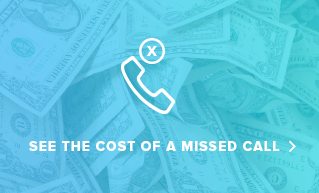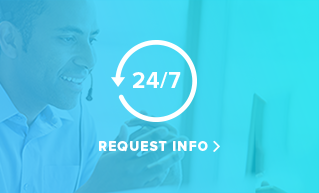
Those expectations have changed significantly over the last few years. Patients now want digital appointment setting services and the option to make and reschedule appointments at their leisure. Gone are the days when traditional nine-to-five availability was sufficient. Instead, we now expect our healthcare receptionists to be there for us whenever is most convenient for our busy lifestyles. While 24/7 patient scheduling might seem out of the question for your practice, it’s increasingly becoming the norm throughout the industry. To keep up with the times, try these tips for successful appointment scheduling.
How to Effectively Schedule Appointments for Patients
Effective patient scheduling starts with clear communication. Clarity is the backbone of any conversation, but becomes especially important when scheduling appointments. Even the most experienced of receptionists can struggle with clear, straightforward messaging. That’s because many people fail to actively listen. The simplest conversations can be muddled when a person is distracted or waiting for their chance to talk. By listening more than we speak, we build the foundations for clear communication.
Automating responses to routine questions can also help improve the appointment scheduling process. Customized call scripts can provide the framework for many of the most frequent topics of conversation. Rather than spend mental energy retrieving information about a specific policy or procedure, receptionists can turn to call scripts for quick, polished answers. While you might expect call scripts to make conversation feel forced, the opposite is true. When there’s a clear, straightforward answer available at the ready, the back and forth of conversation flows even more naturally than usual. Call scripts are also a great way to address frequently asked questions, making each call more efficient – and leaving callers satisfied every time.
Appointment confirmation and reminder texts are another way to effectively schedule your patients. These automated messages help to reduce no-shows and increase the number of patient visits. Since these messages are sent automatically, they free up office staff to focus on patient interactions in-house. Fewer disruptions are a win for everyone.
Improving the Patient Experience
While appointment scheduling best practices may seem like common sense, they’re often just the jumping off point for truly high-quality patient experiences. It’s not enough to merely maintain a presence and send appointment reminder texts. Patients have more freedom of choice than ever before. One bad experience may send them looking for alternative providers. If you’re hoping to level up the patient experience in your office, consider behavioral data.
Let’s say you run a busy dental practice that closes its doors and phone lines at 5:00 PM. A look at your missed call log can be incredibly revealing. If your office receives multiple calls in the evenings after you close – and you return to the office each morning to a full voicemail box – it’s probably a sign you need to increase your availability. Meeting patients where they are is a cornerstone of quality appointment setting.
Of course, your average dental receptionist is eager to get home after a long day at work. Staying another hour or two to wait around for potential calls is nobody’s idea of a good time. For medical practices watching their staffing budgets, increasing hours can be hard on the bottom line, too. This is why so many healthcare facilities are turning to appointment setting services for support. Affordable, convenient, and available 24/7, such services can bridge the gap between the service you’re currently offering and the kind of ideal customer experience you’d like to create.
Collecting Data to Spot Opportunities
As mentioned in the scenario above, a little data can go a long way to inform your appointment setting policies. Simply noticing when you’re likely to receive calls is one way to up your game, but if you’re hoping for higher level insights into patient needs, you may want to solicit more specific feedback. Patient surveys can give a unique perspective into their experience with your practice. By discovering gaps in your scheduling process that cause bottlenecks and workflow issues, you’ll be able to more effectively strategize solutions. Don’t be surprised if a little assessment goes a long way in reducing costs while improving patient satisfaction.
It’s what you do with the insight you’ve gained from data collection that really matters. For many medical practices, patient preferences and behaviors show a demand for increased availability. Once stakeholders make the decision to outsource appointment setting, many of the most common incovneniences callers face – like getting sent to voicemail – will disappear. With inbound calls handled by highly-trained virtual receptionists, in-house receptionists have more time to focus on patient care. The waiting room is no longer inundated by the constant ringing of the telephone, and callers see wait times virtually eliminated.
An outsourced patient scheduling receptionist can work around the clock to ensure there’s always a friendly voice available to schedule appointments. This increased availability will almost certainly lead to an uptick in appointments on the books. Shift workers who don’t have a chance to make calls until after the work day has ended are often eager to connect with medical practices after hours. We all live busy lives, and by opening up our availability, we invite more patients into the practice.
Try MAP Communications Today for Free
If you’re a medical receptionist or dental receptionist hoping to revolutionize the way your practice handles appointment setting, MAP Communications is the solution. Our professional virtual receptionists can integrate seamlessly into your organization, helping to schedule appointments and provide 24/7 support to callers. With MAP on your side, you can level up your customer experience at a fraction of the cost of an additional in-house receptionist. To see for yourself, give MAP a try for free. Sign up for our free trial today!




